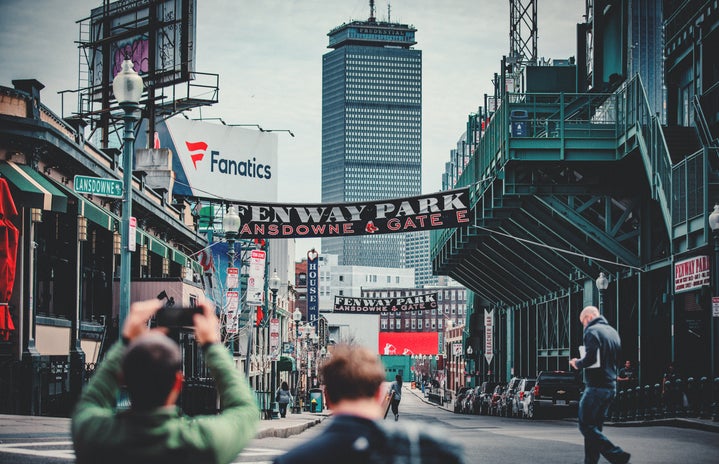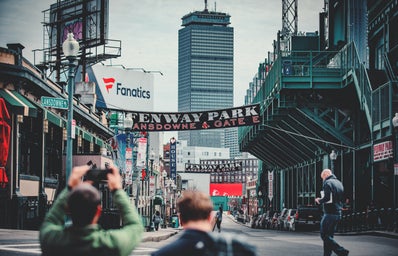This Saturday, hundreds of thousands of people poured into Washington, D.C. in order to take part in the highly-anticipated Women’s March. The march was devised as a result of Donald Trump’s election, and its vision was to “stand together in solidarity with our partners and children for the protection of our rights, our safety, our health, and our families – recognizing that our vibrant and diverse communities are the strength of our country.”
This vision extended far past Washington, too. Over 600 “sister marches” were planned all over the world—even in Antarctica. All day on Saturday, these marches engaged in peaceful protest and enjoyed momunentous news coverage and care all-around. “It was truly a sisterhood (including all of the men who marched),” American University junior Jessica Phillips wrote in an email to Her Campus American (HCAU).
However, the march itself evolved with concerns about inclusivity that lingered over the day of the march. Women’s rights activist Brittany Oliver penned an article explaining why she would not be attending the march, largely arguing that the march was not inclusive for women of color. Meanwhile, “pussy hats,” which became central at the march, were not inclusive of transgender individuals and non-binary folks. Wearing or advertising a “pussy” hat or “pussy grabs back” signs sends the wrong message that womanhood is linked to genitalia. Meanwhile, the D.C. women’s march lacked a modified route for people with disabilities.
Even at the march, American University student Arden Tully wrote to HCAU in an email that they felt alienated at the march “because I did not know where I fit among the marchers. I was a person with a ‘pussy,’ but I was not a woman, and I sure as hell did not feel comfortable with vagina signs that proved most of the marchers did not care about my trans life.” For Tully, the march’s general vibe was hostile to transgender and non-binary folks. “The Million Women’s March accomplished its goal of packing as many bodies as possible onto the National Mall, but it ultimately failed in assuring all of those bodies were given the same level of respect,” Tully wrote.
Furthermore, activists should be reminded that the march does not end on January 21st—nor should have it been merely an effort for a cute Instagram photo. Activism must continue on each day. The Women’s March page has begun including a new “action” item every ten days to keep the activism going. Participants can also continue to call their representatives, volunteer at and donate to organizations that are meaningful to them. Individuals can now examine the march’s drawbacks and generate new ways to be more inclusive and accessible in the future.
And, fortunately, no participants are alone in working together to make things better. There are participants all over the world. Here’s what the march looked like in five different cities.
Washington, D.C.
Photo Credit: Lee Clyne
Read more about the march on D.C. here.
Boston
Photo Credit: Cara McCormack
“The Women’s March in Boston was without a doubt one of the best crowds I’ve ever been a part of. It was the largest assembly of people on Boston Common in history. (They estimate 175,000 people to 200,000 people showed up for the Women’s March. The previous record was 130,000 people in 1979 when Pope John Paul II held a mass there.) I was a bit concerned about the size and scale of it at first (even mid-sized crowds make me super anxious) but I didn’t feel like I had anything to fear from the throng. It was super peaceful – the people were considerate and very respectful to the police, who were very respectful to the protesters in turn. Even the Common and the surrounding streets were fairly free of litter (minus all the signs stuck in fenceposts!) after the fact: by the time I left (around 4:30pm) you could hardly tell that 200,000 people had been through there.” – Cara McCormack.
London
Photo Credit: Chelsea Cirruzzo
The BBC stated that up to 100,000 people attended the march in London, marching to Trafalgar Square while peacefully chanting “build bridges not walls.” According to the BBC, the rally drew speakers Sandi Toksvig and Yvette Cooper. Hamilton star Lin-Manuel Miranda was also in attendance. One fan tweeted about running into Manuel at the march:
When I met @Lin_Manuel I didn’t have to compel him to include women in his sequel because he’s already marching with us #WomensMarchLondon pic.twitter.com/10WsROxm8x — (((Imogen Sebba))) (@imosebba) January 21, 2017
New York City
Photo Credit: Deneen Cirruzzo
“Everything was peaceful. There were tons of people, but there was a lot of love. It was amazing,” raved New York attendee, Deneen Cirruzzo.
Providence
Photo Credit: Ally Cirruzzo
West Palm Beach
Photo Credit: Erica Duffy
Photo Credit: Cover: Jess Phillips


